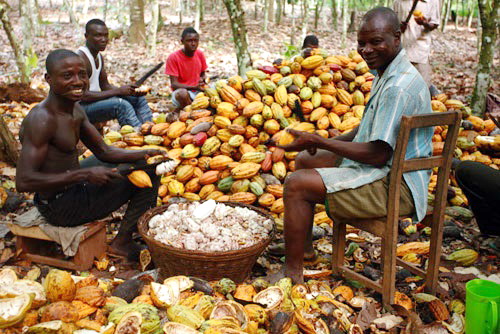
Time to increase cocoa production
The success story of the cocoa sector in Ghana has not come about without challenges, evident in the fact that after the country had emerged as one of the world’s leading producers of cocoa, production experienced a major decline in the 1960s and 1970s and the sector nearly collapsed in the early 1980s.
Advertisement
Production steadily recovered in the mid-1980s after the introduction of economy-wide reforms and the 1990s marked the beginning of a revival, with production nearly doubling between 2001 and 2003.
These ups and downs in cocoa production offer interesting lessons and recent occurrences give indications that with the appropriate inputs much can be attained in the sector.
Since the introduction of cocoa in Ghana in the late 19th century, its production has undergone a series of expansion and contraction that must conscientise us as a nation to ensure that this valuable national resource is well managed to bring in more revenue.
It is in the light of this that the Daily Graphic appreciates the increase in cocoa price, as announced by a Deputy Minister of Finance, Mr Cassiel Ato Forson, at the celebration of Cocoa Day at Tepa in the Ashanti Region last Saturday.
The increase of GH₵800 per tonne may not be as much as those in the sector may desire, but it is an indication that with co-ordinated efforts, much more can be achieved.
But to be able to do that we must take a critical look at some of the factors that militate against our ability to increase our foreign exchange revenue through cocoa production.
Cycles are intrinsic to cocoa production because cocoa is influenced by environmental factors such as availability of forest land, ecological factors such as deforestation, the outbreak of diseases, geographical shifts in production, absence of incentives, a largely aged crop of farmers and a host of other factors.
Studies have shown that cocoa does well when cultivated in areas where there is shade, but in recent times deforestation and the absence of reforestation have led to the situation where cocoa is cultivated under direct sunshine, thereby making cocoa plantations prone to diseases.
Also, the abuse of the land and unhealthy environmental practices such as galamsey have contributed largely to the creation of factors inhibiting the maximisation of production.
The youth who have the energy to undertake cultivation on large tracts of land have left the rural areas for non-existent jobs in the cities, while the aged have been left to farm.
The land tenure system, whereby much land is vested in stools, skins and families, discourages potential cocoa farmers.
Ghana faces the possibility of its quality advantage over other producing countries disappearing in the coming years if proactive steps are not taken to address the challenges that confront the sector.
In addition, the country must determine how to keep its cocoa sector competitive as cocoa-producing households change.
Finally, the environmental impact of current farming practices may soon constrain the expansion of cocoa production.
But the Daily Graphic believes that Ghana is well positioned to expand its position in high-value markets, with the COCOBOD proving to be responsive to trends in international markets.
This is the reason we believe that with more effort, we can redirect national attention and effort towards a popular and enhanced large-scale production of the produce.




